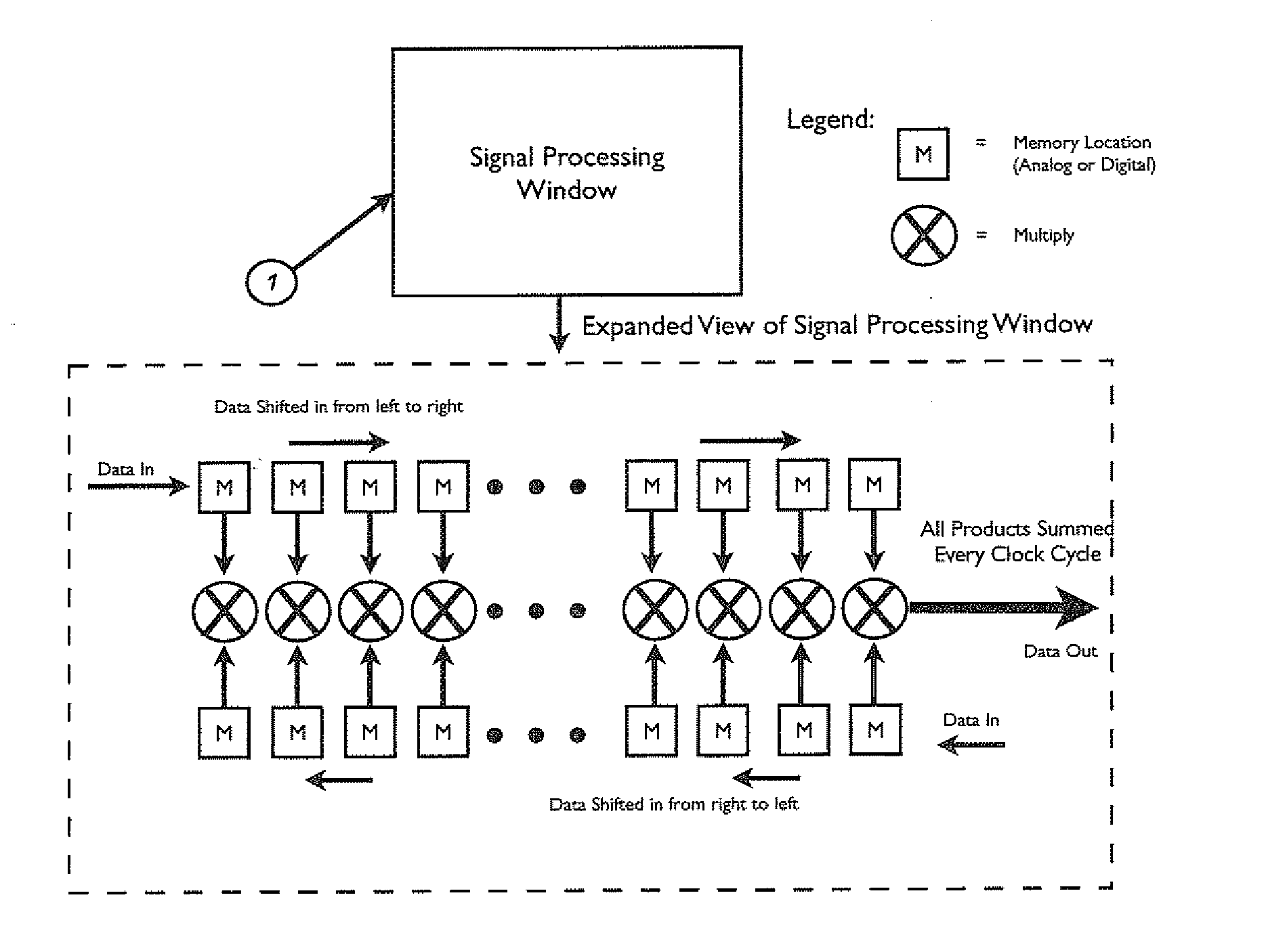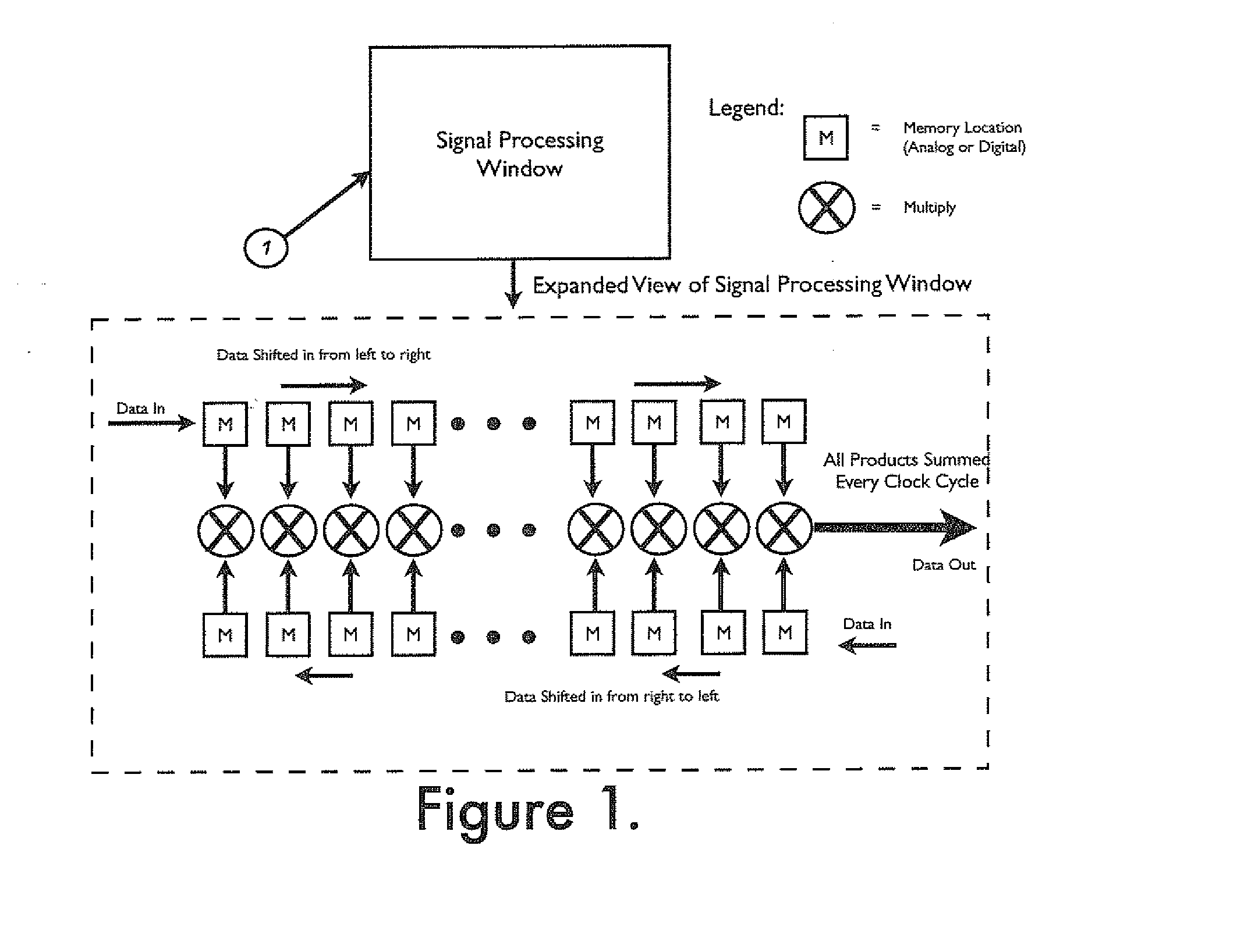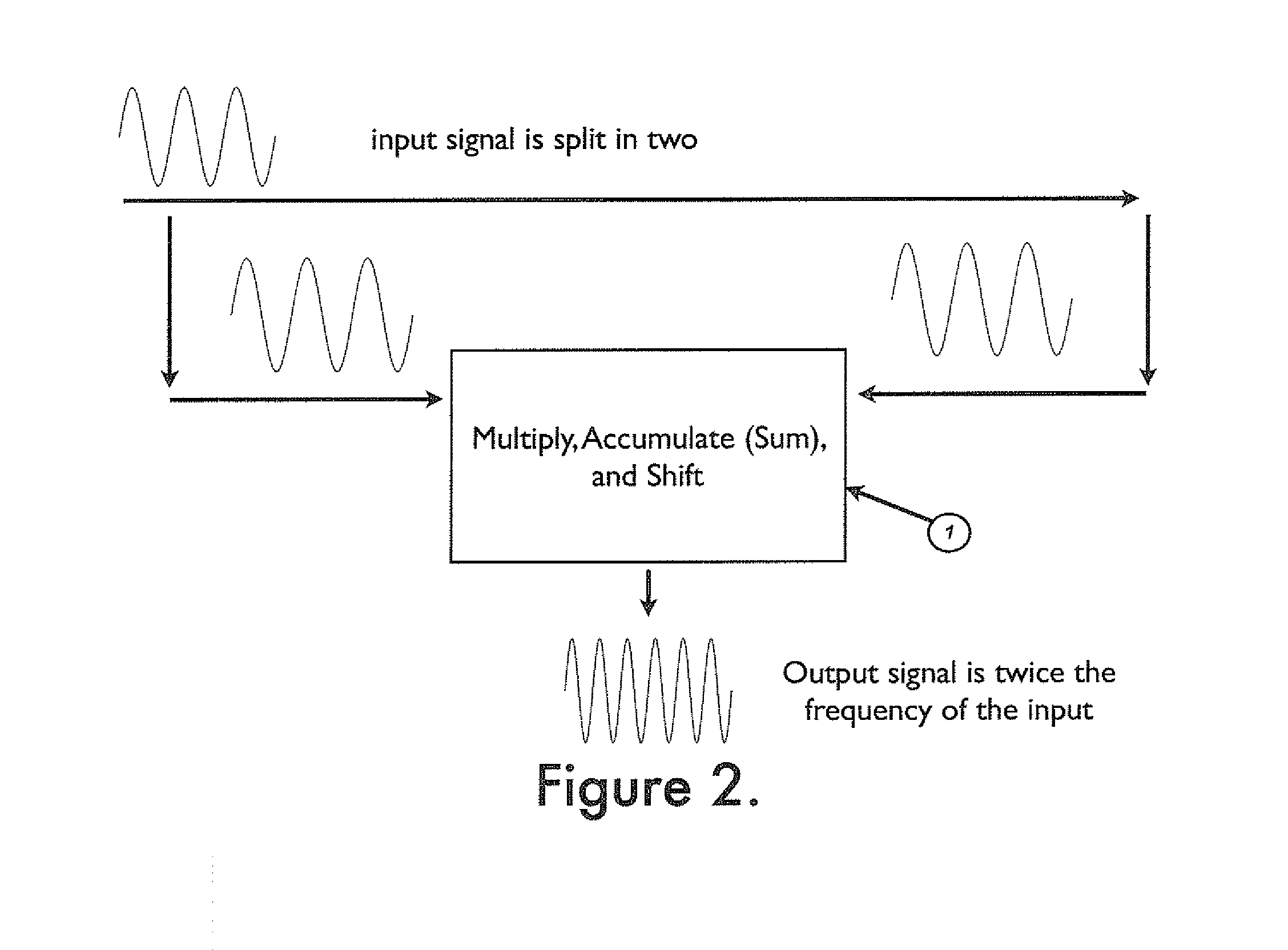System and method for linear frequency translation, frequency compression and user selectable response time
a linear frequency and response time technology, applied in the field of linear frequency translation, frequency compression and user selectable response time, can solve the problems of not allowing reliable, successful processing by circuitry, requiring modification of instruments, and only moderately successful techniques, so as to eliminate the need for polyphonic pickups.
- Summary
- Abstract
- Description
- Claims
- Application Information
AI Technical Summary
Benefits of technology
Problems solved by technology
Method used
Image
Examples
Embodiment Construction
[0083]FIG. 1 shows the basic construction of the processing window. Referring to FIG. 2, a non-deterministic signal is split into two signal paths. The signal can be non-periodic or periodic, and does not have to be sinusoidal.
[0084]FIG. 2 shows a sinusoidal signal for ease of visualization. The signal is digitized and a multiply-sum window (item 1) is created with digital or analog memory locations. The amount of memory locations can be any value from 2 or greater. A window multiplies each corresponding data point of the two functions as they “pass” each other and then sums them all together (as shown in FIG. 1). The most unique feature of this circuit is that both signals are moving. This is very close to classical convolution; however classical convolution requires that one signal be stationary. Each time the signals move to the next memory location, the multiplication and summation are repeated. Because the signals are derived from the same signal, their fundamental frequencies ...
PUM
 Login to View More
Login to View More Abstract
Description
Claims
Application Information
 Login to View More
Login to View More - R&D
- Intellectual Property
- Life Sciences
- Materials
- Tech Scout
- Unparalleled Data Quality
- Higher Quality Content
- 60% Fewer Hallucinations
Browse by: Latest US Patents, China's latest patents, Technical Efficacy Thesaurus, Application Domain, Technology Topic, Popular Technical Reports.
© 2025 PatSnap. All rights reserved.Legal|Privacy policy|Modern Slavery Act Transparency Statement|Sitemap|About US| Contact US: help@patsnap.com



